Some drilling projects finish easily, while others face difficulties. Controlling air pressure really matters!
Air pressure plays a vital role in keeping Down-The-Hole (DTH) drill bits strong and useful. Good control stops too much wear and tear. This helps drill bits work better. Keeping air pressure at the right level helps save money. It also really improves how well the drill bits perform.
I remember my first visit to a drilling site. The excitement really filled the air. But, I quickly discovered why air pressure is so important. Air pressure decides if the operation runs smoothly or if drill bits need replacing too soon. Proper air pressure leads to better drilling. This not only improves work but also prolongs the life of tools. The right pressure truly transforms drilling experiences.
Higher air pressure increases DTH drill bit lifespan.True
Increased air pressure optimizes drilling efficiency, leading to reduced wear and tear on DTH drill bits, thus extending their lifespan.
Low air pressure does not affect DTH drill performance.False
Low air pressure can lead to inefficient drilling and increased wear on DTH drill bits, negatively impacting performance and durability.
What Are the Signs of Improper Air Pressure in Drilling Operations?
Have you ever had that awful feeling when you notice something is wrong during drilling? I definitely have. Recognizing the signs of incorrect air pressure helps protect operations. This keeps them safe and smooth. Key indicators can prevent expensive errors. These signals matter.
Look for signs of wrong air pressure in drilling tasks. Watch for excessive wear on the drilling bit. Overheating often indicates issues. Poor penetration rates might signal a problem. Debris clogging is another warning sign. Recognizing these early signs helps avoid expensive downtime. It keeps the operation running smoothly.
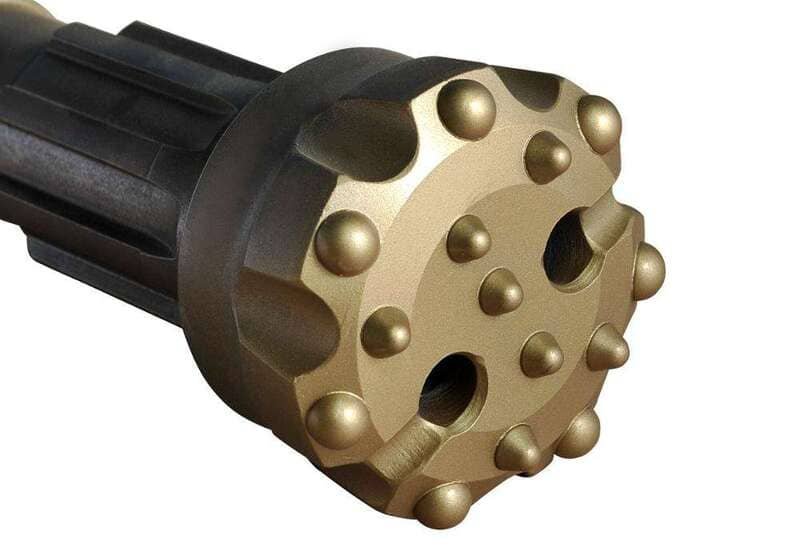
1. Indicators of Excessive Air Pressure
Excessive air pressure can lead to significant operational issues, and some signs to look out for include:
-
Increased Bit Wear: It's like driving on a bumpy road; friction causes damage. High air pressure increases friction between the drill bit and rocks, leading to accelerated wear. This results in a shorter lifespan for the drill bits.
-
Overheating: Just like an engine overheats, high-pressure air overheats drill bits too. I saw a bit break because it got too hot, which may lead to failure during operations and cause unexpected downtime.
-
Frequent Breakdowns: If breakdowns become a regular occurrence, it could indicate that the air pressure is set too high, stressing the equipment beyond its limits. I’ve been there - machines act up due to wrong settings.
For further insights on how to manage excessive pressure, refer to pressure management strategies1.
2. Signs of Insufficient Air Pressure
On the other hand, insufficient air pressure can also severely hamper drilling operations. Key indicators include:
-
Poor Penetration Rates: Low air pressure is like using a feather to break a wall instead of a hammer; it leads to reduced efficiency in breaking rock, resulting in slower penetration rates and increased operational costs.
-
Debris Clogging: If debris piles up in a borehole, it's bad news. Low air pressure doesn't clear debris well; insufficient pressure does not effectively flush out debris from the hole, causing clogs that hinder drilling progress.
-
Bit Binding: Drill bits get stuck in the borehole with low pressure; this common sign can result in costly delays and damage as I felt the frustration of pulling everything out.
To explore optimal air pressure ranges for various conditions, check out optimal drilling pressures2.
3. Impact on Drilling Efficiency
The efficiency of drilling operations is closely tied to maintaining proper air pressure. Some indicators that might suggest issues include:
| Efficiency Metric | Sign of Improper Pressure |
|---|---|
| Penetration Rate | Decreased compared to expected norms |
| Rock Fragmentation | Ineffective with noticeable debris |
| Drill Cuttings Removal | Slow or inefficient clearance |
If you notice performance dips or metrics drop, don't ignore! Check your air pressure settings to improve things.
For more detailed analysis on improving efficiency, consider reviewing drilling efficiency techniques3.
4. Cooling and Flushing Issues
Proper air pressure plays a crucial role in cooling the drill bits and flushing debris effectively. Watch out for these signs:
-
Excessive Heat: Overheating bits mean cooling isn't working due to high pressure; if drill bits are overheating frequently, it indicates that the cooling mechanism via proper air pressure is failing.
-
Debris Buildup: Insufficient air pressure causes debris to build up; this lack of effective flushing can lead to operational headaches as it hinders operations and potentially causes equipment failure.
For techniques on maintaining adequate cooling during operations, check out cooling techniques in drilling4.
5. Regular Maintenance Checks
Regular maintenance checks are essential to avoid air pressure problems. Always look for:
-
System Pressure Variability: If gauges are inconsistent, something needs fixing; inconsistent readings from pressure gauges can indicate system issues that need addressing.
-
Operator Training: All operators should recognize signs of improper air pressure; this knowledge really makes a difference in safety and efficiency as it's critical for maintaining operational safety and efficiency.
For best practices on maintenance checks, visit maintenance strategies for drilling equipment5.
High air pressure causes increased drill bit wear.True
Excessive air pressure leads to more friction, resulting in faster drill bit wear and shorter lifespan.
Low air pressure improves drilling efficiency.False
Insufficient air pressure reduces penetration rates and increases operational costs, negatively affecting efficiency.
How Does Air Pressure Influence Rock Fragmentation Efficiency?
Have you ever been part of a drilling operation and wondered why air pressure is so important for efficiency? Air pressure is very important. It's amazing how this element truly changes everything in the process! Let's explore its mysteries together.
Air pressure plays a very important role in breaking rocks during drilling. It influences how the drill bit works and how debris gets cleared away. Suitable pressure changes with different rock types. Soft rocks need 100-150 psi. Medium rocks require 150-200 psi. Hard rocks demand 200-250 psi for good drilling results.
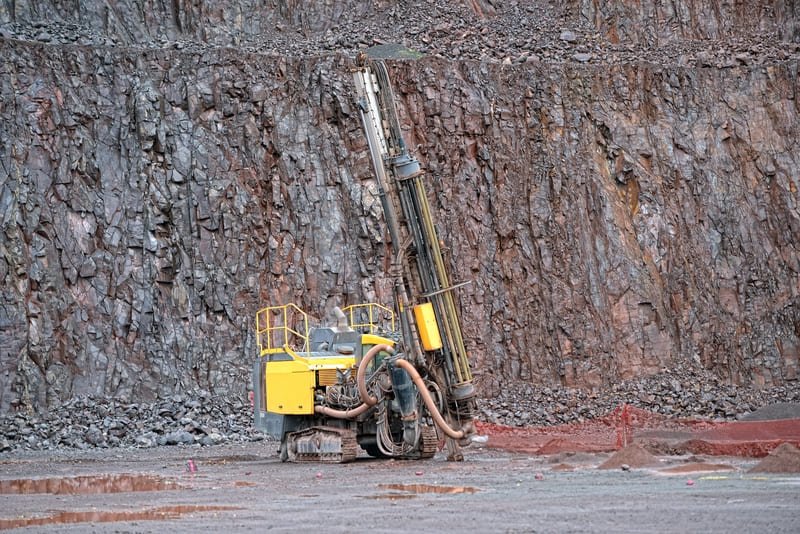
Understanding Air Pressure and Its Role in Rock Fragmentation
Air pressure quietly works behind the scenes in drilling operations. It increases efficiency. On my first visit to a drilling site, machinery noises filled the air. Air pressure's importance in removing rock pieces, cooling the drill bit, and ensuring good performance really impressed me. It's like a team member who works hard but often remains unnoticed. This team member plays a crucial role.
Optimal Air Pressure for Different Rock Types
I discovered that ideal air pressure differs based on rock type. There is no one-size-fits-all solution. A reference table helps me find the right air pressure for my work:
| Rock Type | Optimal Air Pressure (psi) |
|---|---|
| Soft Rocks | 100 - 150 |
| Medium Rocks | 150 - 200 |
| Hard Rocks | 200 - 250 |
Correct air pressure allows everything to function smoothly. Too little pressure can result in slow cutting and debris blocking, causing delays, which nobody likes.
The Impact of Excessive Air Pressure
Too much air pressure is also a problem. A colleague once mentioned how overpressure caused:
- More friction between the drill bit and rock.
- Strong forces damaging the drill's carbide parts.
- Drill bit overheating, risking damage.
Balancing air pressure is like walking a tightrope. Too much or too little leads to problems.
How Insufficient Air Pressure Affects Efficiency
Low air pressure feels like running with a heavy load. It limits:
- Debris clearing, causing drill bit clogging.
- Bit sticking, leading to unwanted downtime.
Adjusting Air Pressure Based on Conditions
In my experience, adjusting air pressure is necessary. Operators should change it according to:
- Rock Hardness: Softer rocks need lower pressure; harder rocks need more.
- Depth of Borehole: Deeper holes impact pressure needs as conditions change.
- Desired Penetration Rate: Faster penetration requires higher pressure for cutting and clearing.
For more info, visit drilling conditions impact.
Conclusion on Management Practices
Regular air pressure checks boost drilling efficiency. Equipment lasts longer with proper management. I've introduced routine checks and team training to notice poor pressure issues. Embracing these practices enhances performance and cuts costs due to reduced wear and delays.
To explore maintenance strategies, check out maintenance best practices. Sharing these insights may inspire you to improve your drilling practices and operations!
Optimal air pressure varies by rock type during drilling.True
Different rock types require specific air pressure ranges for efficient fragmentation, affecting drilling performance and equipment wear.
Excessive air pressure improves rock fragmentation efficiency.False
High air pressure can lead to increased friction and damage, reducing overall efficiency in rock fragmentation during drilling operations.
How Can I Effectively Manage Air Pressure Through Maintenance Practices?
Air pressure management goes beyond a technical need. It is the lifeblood of industrial equipment. Here are some important maintenance practices. These practices improve performance, reduce costs and lengthen equipment life.
To control air pressure well, conduct regular monitoring. Change filters as needed. Adjust settings based on what operations require. Train personnel thoroughly. Establish routine maintenance checks. These practices improve efficiency. They also extend equipment life. Equipment lasts longer.
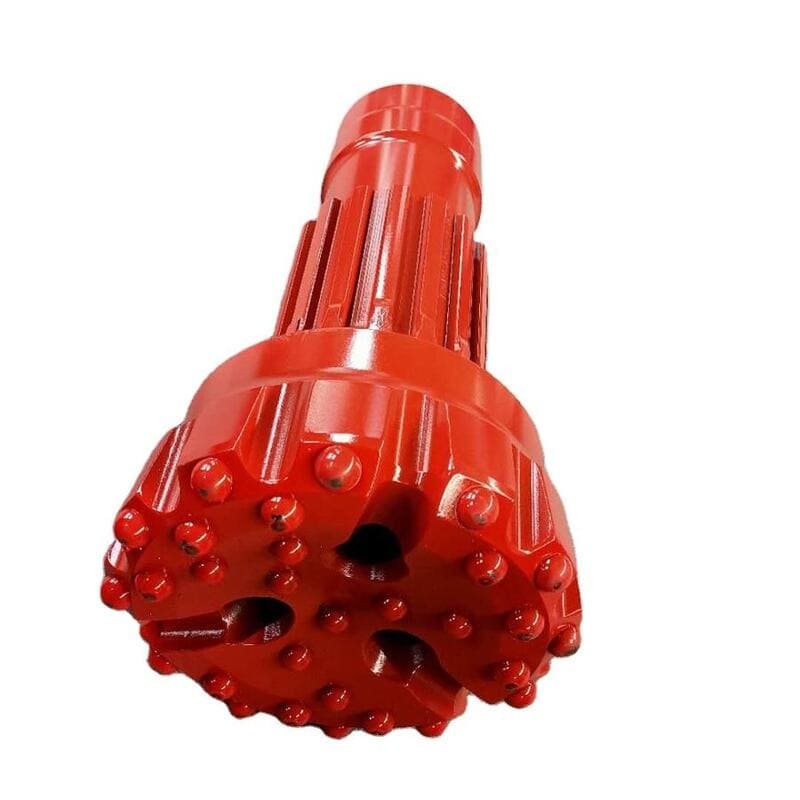
Regular Monitoring of Air Pressure
Managing air pressure in your compressor system is vital for smooth operation. It's like keeping your heartbeat steady.
Key practices include:
- Routine Checks: Schedule daily or weekly inspections. Keeping the air pressure within the recommended range helps immensely. A small commitment can lead to big benefits.
- Pressure Gauges: Invest in reliable pressure gauges. These tools provide accurate monitoring and are crucial.
- Data Logging: Keep records of pressure readings. This task might seem tedious, but it is invaluable. Identifying trends over time has saved me from potential problems.
This proactive approach can help prevent issues that arise from excessive or insufficient air pressure, which can lead to equipment damage and increased operational costs. For more insights on equipment longevity, check out maintenance strategies6.
Filter Changes and System Integrity
Filters work quietly to maintain air quality and pressure consistency. They are the unsung heroes of our systems.
| Maintenance steps include: | Task | Frequency | Notes |
|---|---|---|---|
| Inspect Air Filters | Monthly | Replace if clogged or damaged. | |
| Change Filters | Every 3-6 months | Consider upgrading to high-efficiency filters for better performance. | |
| Inspect Hoses and Connections | Quarterly | Look for leaks or signs of wear. |
Keeping filters clean helps prevent pressure fluctuations that can affect equipment performance. To understand more about choosing the right filters, visit filter selection guide7.
Properly Adjusting Air Pressure
Adjust air pressure based on the specific demands of your operation for efficiency.
Consider these factors:
- Operational Requirements: Different tools require different pressure levels. It's like adjusting gear for hiking versus climbing; both need different setups.
- Environmental Conditions: Temperature and humidity affect air pressure; always keep an eye on these variables.
- Regular Calibration: Calibrate gauges and controls correctly; a small adjustment can have a big impact.
These adjustments significantly improve operational efficiency, and equipment lifespan can also increase. Explore best practices in air pressure adjustment8.
Training Personnel
Effective air pressure management starts with well-trained staff. This was a big revelation for me.
Training recommendations:
- Technical Training: Teach your team to operate and monitor air systems effectively; their knowledge is your safety net.
- Safety Protocols: Regularly educate teams on safety measures for handling compressed air systems; this really can’t be overstated!
- Regular Updates: Keep staff informed about new technologies and methods that improve air pressure management.
Investing in training improves safety and overall system efficiency. Learn more about effective training programs at training resources.
Routine Maintenance Checks
Routine maintenance ensures air pressure systems' reliability.
Essential activities include:
- Lubrication: Regularly lubricate moving parts to prevent wear; missing this is a bad idea!
- Inspection Schedule: Establish a checklist for routine inspections focusing on critical components such as valves, hoses, and compressors.
- Documentation: Keep detailed records of all maintenance activities to track performance and issues over time.
Structured maintenance plans enable early detection of potential issues; missing a small leak during a busy week turned into a costly breakdown for me.
Regular monitoring of air pressure improves equipment performance.True
Consistent checks help maintain optimal pressure, preventing damage and reducing costs.
Changing air filters every month is unnecessary for all systems.False
Frequency depends on system use; some may require less frequent filter changes.
How Do Different Rock Types Affect Optimal Air Pressure Settings?
Did you ever face tough moments during your off-road trips and found that your tires did not grip well? Different rock types greatly change your driving experience. Let's explore how this happens!
**When dealing with different rock types, adjusting air pressure is very important for tire performance. Soft rocks like sandstone need lower pressures (100-150 psi) to keep traction. Harder rocks like granite require higher pressures (200-250 psi) to avoid damage and maintain stability. This adjustment really matters!
Each rock type has unique traits that affect tire pressure. I remember driving over soft sandstone. Lower pressure was crucial to prevent tire blowouts and keep my vehicle gripping the ground.
Understanding Rock Types and Their Traits
- Soft Rocks
Examples are sandstone or limestone. These rocks are very soft and easy to go through.
Recommended Air Pressure꞉ 100-150 psi
Effects on Performance꞉
- Low pressure reduces tire wear, great for long trips.
- Proper pressure keeps traction and prevents blowouts.
- Medium Rocks
Shale is a medium rock type needing a bit more pressure.
Recommended Air Pressure꞉ 150-200 psi
Effects on Performance꞉
- Moderate pressure gives stability and prevents tire bending. Smooth rides depend on it.
- Good traction is possible without harming tires.
- Hard Rocks
Granite or basalt are hard and challenging for tires.
Recommended Air Pressure꞉ 200-250 psi
Effects on Performance꞉
- Higher pressure is really needed to stop tire damage. Once, this knowledge saved my tires from a puncture!
- Proper pressure improves handling and decreases puncture risk.
The Importance of Air Pressure Management
Managing air pressure by rock type helps tire performance and extends tire life.
Adapting Air Pressure for Terrain Conditions
Terrain features also impact air pressure choices꞉
Slope and Incline꞉ Steeper slopes may need higher pressures to stay stable.
Wet Conditions꞉ More pressure can stop hydroplaning. Trust me, it can make a big difference.
Rough Terrain꞉ Lower pressures help grip but increase flat risks on bumpy surfaces.
Tools for Adjusting Air Pressure
For managing air pressure by rock and terrain types, use꞉
Tire Pressure Gauges꞉ Accurate readings before trails are a must.
Mobile Apps꞉ Helpful tools with calculators for ideal pressures.
Community Forums꞉ Places like Reddit offer shared tips for air pressure settings.
Going off-road is thrilling. Knowing how rocks affect tire pressure improves the experience. So, gather your gear and hit the trails confidently!**
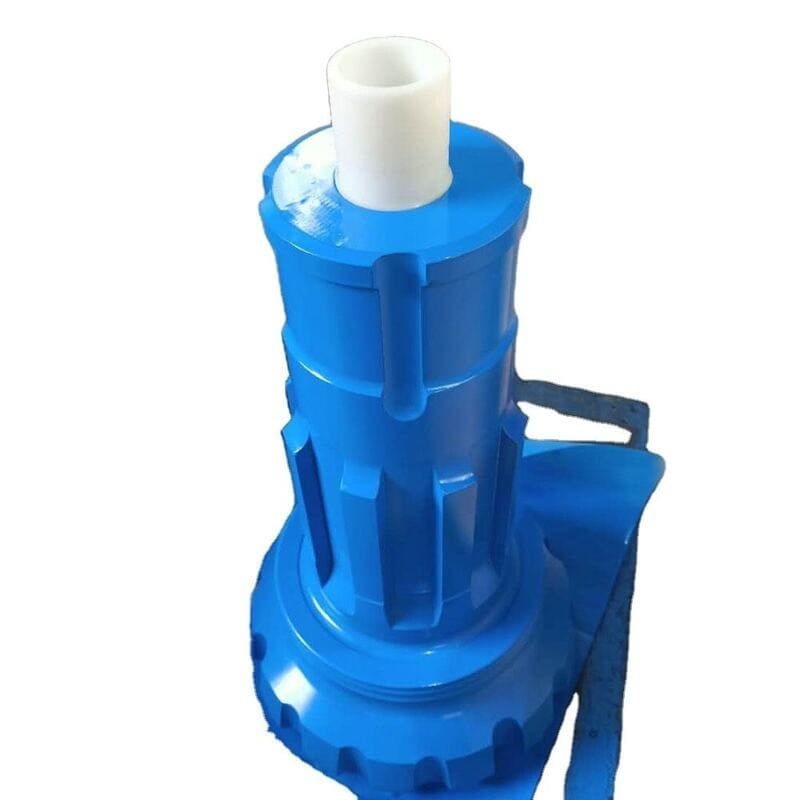
Knowing How Different Rock Types Influence Air Pressure Settings
Knowing how different rock types influence the best air pressure settings is very important for off-roading enthusiasts. It is a real game-changer. During my first adventure on rocky paths, my heart was full of excitement. However, I soon discovered that the correct air pressure truly impacts the experience. Let's explore this topic together so you can avoid tense situations!
Understanding Rock Types and Their Characteristics
Different rock types exhibit unique physical properties that can significantly impact how optimal air pressure settings are determined.
1. Soft Rocks
Soft rocks, such as sandstone or limestone, are less dense and easier to penetrate.
- Recommended Air Pressure: 100-150 psi
- Effects on Performance:
- Higher air pressure is often unnecessary, as it can lead to excessive wear on tires.
- Optimal pressure helps maintain traction without risking tire blowouts.
2. Medium Rocks
Medium rocks like shale require more robust air pressure settings to ensure effective navigation.
- Recommended Air Pressure: 150-200 psi
- Effects on Performance:
- Moderate pressure allows for better stability while preventing excessive deformation of the tire.
- Enhanced traction is achievable without compromising tire integrity.
3. Hard Rocks
Harder formations, such as granite or basalt, pose significant challenges to tire performance.
- Recommended Air Pressure: 200-250 psi
- Effects on Performance:
- Increased air pressure is crucial to minimize tire damage and maximize penetration efficiency.
- Properly set air pressure can lead to improved handling and reduced risk of punctures.
The Importance of Air Pressure Management
Managing air pressure according to the rock type not only enhances performance but also prolongs the life of the tires. Here are key reasons why this is essential:
| Rock Type | Optimal Air Pressure (psi) | Benefits | Risks of Incorrect Pressure |
|---|---|---|---|
| Soft Rocks | 100-150 | Improved traction, reduced wear | Blowouts, loss of control |
| Medium Rocks | 150-200 | Better stability, balanced wear | Tire deformation, increased wear |
| Hard Rocks | 200-250 | Enhanced handling, fewer punctures | Tire damage, increased downtime |
Adapting Air Pressure for Terrain Conditions
In addition to rock hardness, other terrain factors also influence optimal air pressure settings:
- Slope and Incline: Steeper inclines may require slightly higher pressures for better stability.
- Wet Conditions: Increased pressure may be needed in wet conditions to avoid hydroplaning.
- Rough Terrain: On uneven surfaces, lower pressures might help maintain grip but can increase the risk of pinch flats.
Practical Tools for Adjusting Air Pressure
To effectively manage air pressure based on varying rock types and terrain conditions, consider using:
- Tire Pressure Gauges: Ensure accurate readings before hitting the trails. Learn more9.
- Mobile Apps: Some apps provide calculators for optimal air pressures based on terrain types and conditions. Explore options.
- Community Forums: Platforms like Reddit offer shared experiences that can guide you in making informed decisions about air pressure adjustments. Join the discussion.
Soft rocks require lower air pressure settings than hard rocks.True
Soft rocks like sandstone need 100-150 psi, while hard rocks require 200-250 psi for optimal performance.
Higher air pressure always improves tire performance on all terrains.False
Higher air pressure is not always better; it can lead to excessive wear and blowouts on softer terrains.
How Are Innovations Revolutionizing Air Pressure Management in Drilling?
Let's explore the world of drilling innovations. They are changing how we handle air pressure, which is crucial for efficient drilling operations. Air pressure is a key element. Efficient drilling depends on it.
New inventions helping control air pressure in drilling use advanced sensors and automatic control systems. Better materials for drill bits and clever drilling methods also play a part. Robots working together are part of these changes too. These improvements very often help operations run smoothly and with more safety. They also probably help reduce wear on equipment.

Innovations in Sensor Technology
The drilling world has always been special to me. I learned that controlling air pressure is vital during my work on different sites. It is amazing to see how technology changes, bringing tools and systems that improve the job’s speed and safety. Let’s explore some of these exciting innovations together!
-
Real-Time Monitoring: Sensors now provide nonstop air pressure data. Operators, like me, can quickly adjust, leading to better drilling and less wear on drill bits. It’s truly revolutionary!
-
Data Analytics: AI and machine learning help us predict equipment problems. By studying past pressure data, we predict issues before they occur. This proactive approach reduces downtime significantly.
For more on sensor innovations, check out latest sensor technologies10.
Automated Pressure Control Systems
Handling pressure manually while multitasking can be stressful. Automated systems help reduce that stress.
-
Benefits: These systems adjust pressure based on real-time sensor feedback, keeping conditions ideal without our input. It's like a trusty assistant!
-
Efficiency Gains: Removing human error boosts safety and keeps pressure stable, making drilling smoother than ever.
Explore further into automation in drilling with automation benefits11.
Enhanced Material Science
Equipment failures due to wear and tear have been challenging. New materials for drilling tools bring relief.
-
Durability: Advanced materials last longer under high pressure, reducing replacements and saving time and money.
-
Heat Resistance: These materials handle heat better, preventing overheating during tough drilling, which extends tool life.
Learn about material innovations at material advancements12.
Smart Drilling Techniques
Smart technologies are changing drilling and how we manage air pressure.
-
Real-Time Adjustments: Techniques using real-time feedback improve penetration rates and lessen drill bit wear. I always wanted this!
-
Adaptive Systems: These systems change with geological conditions, adjusting air pressure as needed. This potential excites me!
Discover more about these technologies at smart drilling technologies13.
Collaborative Robotics (Cobots)
Collaborative robots or cobots have been an incredible development in drilling.
-
Assistance: Cobots handle repetitive tasks like air pressure checks, letting us focus on complex tasks.
-
Safety: Cobots lighten our workload, helping maintain a safer work environment while ensuring constant monitoring.
Explore the potential of robotics in drilling at robotic innovations14.
Real-time monitoring enhances drilling efficiency.True
Continuous data from sensors allows immediate adjustments, optimizing performance and reducing drill bit wear.
Automated systems eliminate human error in drilling.True
These systems maintain consistent pressure levels automatically, enhancing safety and operational efficiency.
How Can Operators Adjust Air Pressure Based on Environmental Conditions?
Do you ever think about how operators adjust air pressure to handle drilling challenges? It involves more than just numbers. Understanding the environment is crucial. Adjustments need to truly matter.
Operators adjust air pressure by considering environmental factors. These factors include temperature, humidity, rock type, borehole depth and desired penetration rate. Efficiency remains high when operators adjust for these variables. Equipment experiences less wear and tear. This adjustment keeps performance optimal under different conditions.
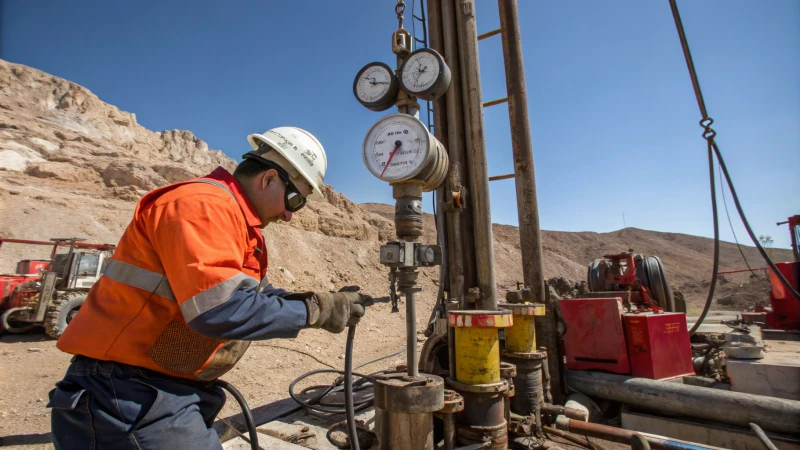
Understanding Environmental Factors
As an operator, I know how important it is to notice different environmental conditions that change air pressure. These conditions affect how I adjust pressure. Factors such as:
- Temperature: Heat reduces air density. I adjust pressure during hot weather to keep drilling efficient.
- Humidity: Moist days introduce moisture, affecting how air compresses, requiring pressure adjustments.
For instance, during a really hot summer drill, I boosted air pressure due to lower density. This adjustment kept rocks breaking well and operations smooth. It was very important to adapt to these conditions.
Adjusting Air Pressure Based on Rock Type
Each rock has its own story. Tailoring air pressure to rock type is vital for top performance. Here's a quick guide I follow:
| Rock Type | Recommended Pressure (psi) | Effect of Incorrect Pressure |
|---|---|---|
| Soft Rocks | 100-150 | Reduced fragmentation |
| Medium Rocks | 150-200 | Increased wear on bits |
| Hard Rocks | 200-250 | Ineffective cutting action |
Once, I made a mistake with medium rock pressure, causing more wear on my bits. Lesson learned. Adjusting air pressure well improves drilling and helps equipment last longer.
Monitoring Borehole Depth
Going deeper into a borehole, I noticed increased pressure from the surrounding rock. Changes depend on:
- Depth: Deeper holes need higher pressure for the bit to perform well and clear debris.
- Borehole Stability: In unstable areas, correct pressure helps prevent collapsing and ensures steady drilling.
I always watch depth and adjust timely to stop inefficiencies. Monitoring is crucial.
Learn more about depth impacts on drilling here.
Impact of Penetration Rate
The penetration rate affects how I adjust air pressure. Faster rates need higher pressures to keep:
- Efficient Fragmentation: Keeping bits working well without overheating is a priority for me.
- Effective Debris Removal: Drill cuttings often clog bits and slow down work.
Balancing speed and equipment life is crucial. I frequently adjust pressure based on operation feedback. Constant updates keep efficiency high. For tips on optimizing penetration rates, see this guide.
Training and Routine Checks
Regular training for operators is crucial for knowing when adjustments are needed. Key activities include:
- Routine Pressure Checks: I regularly check the air pressure system to ensure it works properly.
- Manufacturer Guidelines: Following recommended pressure settings helps avoid many issues.
Building a strong training program focusing on these practices is essential. This approach is vital for successful air pressure management in the field. Discover best practices for training here.
Higher temperatures require increased air pressure for drilling.True
In hotter climates, lower air density necessitates higher air pressure to maintain effective rock fragmentation during drilling operations.
Soft rocks need higher pressure than hard rocks for efficiency.False
Contrary to this claim, soft rocks require lower pressure (100-150 psi) compared to hard rocks (200-250 psi) for optimal drilling performance.
Conclusion
Effective air pressure management is crucial for maximizing DTH drill bit durability and performance, influencing wear rates and operational efficiency in diverse geological conditions.
-
Clicking this link provides deeper insights into managing drilling pressures effectively, which can enhance safety and performance. ↩
-
This link offers valuable information on optimal drilling pressures based on different geological conditions, helping improve your operational strategies. ↩
-
Explore this resource for practical techniques to enhance drilling efficiency through better air pressure management. ↩
-
Gain insights into effective cooling techniques during drilling operations that help manage heat generated from improper air pressures. ↩
-
This link details best practices for maintenance checks that can help you identify and rectify improper air pressure issues before they escalate. ↩
-
Learn effective maintenance strategies for managing air pressure in industrial systems, ensuring efficiency and compliance with safety standards. ↩
-
Explore essential tips for filter maintenance in air compressor systems to enhance performance and reliability. ↩
-
Understand how proper training can improve air pressure management and operational safety within your team. ↩
-
Clicking here can lead you to expert insights on managing tire pressures effectively based on terrain types. ↩
-
This link provides insights into the latest technologies in sensor development crucial for air pressure management in drilling, offering a deeper understanding of their applications. ↩
-
Gain insights into how automation is reshaping the drilling landscape and improving efficiency through automated pressure control systems. ↩
-
Learn about the cutting-edge materials enhancing drill bit durability and performance under high-pressure conditions. ↩
-
This resource dives into smart technologies that adapt drilling parameters in real-time, optimizing air pressure management. ↩
-
Explore how collaborative robotics are enhancing safety and efficiency in drilling environments through innovative air pressure management solutions. ↩








